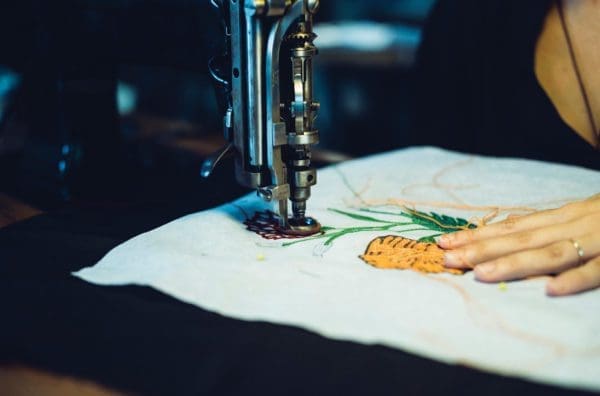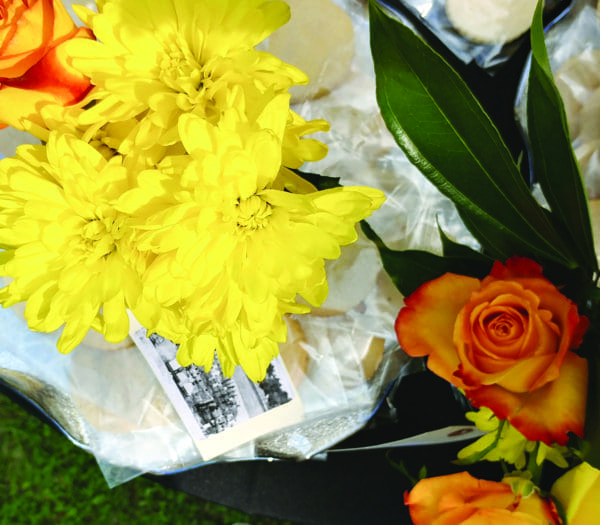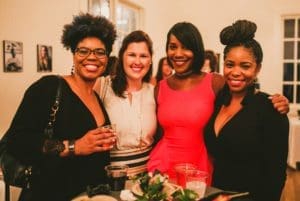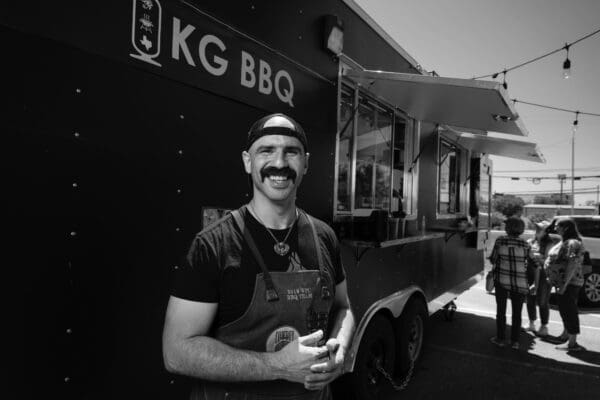Slow Fashion

Fort Lonesome
Words by Sommer Brugal Photos by Eric Morales
It’s jean jackets and the perfect West Texas sunset. It’s slow fashion creating beautiful chainstitch designs. It’s Patsy, Pearl, Dolly, and Fancy; each name depicts a different personality and character. Yet, Patsy isn’t a person or individual. She’s a sewing machine that dates back more than one hundred years and hums loudly while at work in the Ft. Lonesome studio.
“All of us will tell you that when you get used to your machine, [stitching] on someone else’s is very disorienting.” Amrit Khalsa is a lead designer and stitcher at Ft. Lonesome, a custom design and chainstitch shop in East Austin. She stitches on Pearl, a slow but detail-oriented machine.
Despite the personal bond each stitcher has with her machine, Ft. Lonesome is a collective effort. “When we first started out, we would drive cross-country to California and stay there for two weeks. We’d drive to Marfa and be there for a week,” remembers Amrit. “We had this pseudo band feel about our work. We were road warriors.”
Kathie Sever is the founder of Ft. Lonesome, and much of her design history is seen in the stitch work that comes out of the studio. Kathie’s Americana and western wear influences play a big role in the brand’s preferred aesthetic of West Texas landscapes, night skies, and deserts.
“Kathie’s business has evolved from a western-wear standpoint,” says Amrit, “but our capacity to invent new techniques that lend themselves to these landscapes has evolved.” Ft. Lonesome was among the first brands to successfully blend colors using chainstitch machines.
The main mission behind Ft. Lonesome is to take items of clothing that already possess a certain relevance to the owner and make it that much more meaningful. Part of the brand’s general motivation is to slow fashion down.
The Ft. Lonesome team focuses on four styles of patchwork and embroidery: custom patch work; full jacket backs; custom shirts, where designers build the shirt and then add the design and embroidered elements; and full suits, with custom western-wear inspired designs constructed in-house.
From the smallest patch to a tailored suit, a special relationship is fostered between the designer and a customer. While many people come for the trend or the simple beauty of chainstitch designs, Amrit says others come to create art that represents something in their lives.
“Because we do this every day, it’s hard to imagine that someone would be that moved by our work,” Amrit humbly admits. “[But] when people are receptive and want to make a connection with us for making them something…we always love that.”
ftlonesome.com
Common Misconceptions:
Chainstitch work is physically demanding, but surprising to some, it’s not the most challenging aspect of the job. Khalsa says relaying the value of their time and designs is often the largest wall between a project and potential customers.
In a sense, it’s a double-edged sword. Though more people have become interested in handmade chainstitch products, many more don’t fully understand the work that it entails and the costs incurred in producing the final product.










